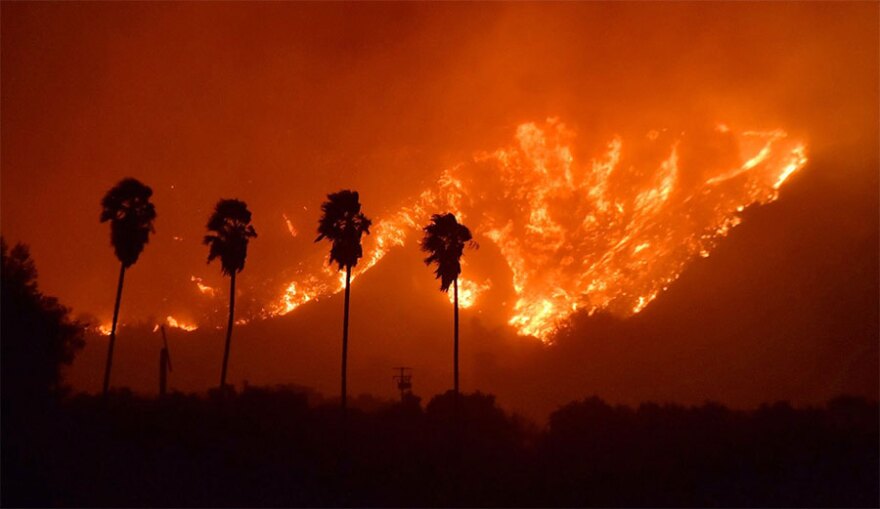More than 200,000 people are under evacuation orders in the greater Los Angeles area as several major wildfires continue to burn. Firefighting crews from all across the country are either on scene or en route to the front lines, including several municipal fire departments from Arizona. City of Prescott Fire Chief Dennis Light told to KNAU’s Ryan Heinsius his crew is prepping to go.
Dennis Light: This morning we were requested for a Type 6, or what’s called a brush patrol unit, and we’re planning on filling that order contingent upon on a follow-on meeting at the state level.
RH: What does that involve? What will these crews be doing?
DL: A Type 6 is normally assigned to what’s called patrol duties—they’ll be patrolling a fire area. First and foremost, we source an engine boss to kind of lead the crew and then two other members, an engineer and a firefighter. They’ll make the travels over to whatever particular event in Southern California to which they’re assigned. There will be an incident command post and a camp that they’ll check into and then have to have a measure of accountability for all the personnel that are operating on the grounds. And then they will eventually receive a subordinate assignment, probably working under a division or group supervisor and providing fire suppression activities.
RH: These fires are obviously very extreme out there. Is there any precedent for sending local fires crews like we’re seeing in Arizona to another state?
DL: Yes, it happens pretty much every fire season, whether it be up into the northwest of Oregon or Washington, the higher Rocky Mountain states, down into the Rocky Mountain states, Arizona, New Mexico—pretty much everywhere west. The biggest thing is with the magnitude of the California fires, and the volume and number of them, and the erratic fire behaviors, this is one of those more unique situations as compared to some of those in recent memory.
RH: In this time when Arizona is so dry, does that in any way leave this state or this area vulnerable?
DL: Well, from what I understand there is a conversation taking place at the state level to ensure that we don’t strip all of the state of Arizona’s capabilities. Most fire departments including my own have adopted what’s called a draw-down standard. It’s a little bit of a moving target, it depends on the local fire conditions. We have established no more than 10 percent of our entire suppression force would ever be deployed out of our current region. In that case for us that means no more than six people. That’s kind of a national adopted number, anywhere from 20 to 10 percent, so we never leave a community too far stripped of their local resources.
RH: Chief Light thanks so much for speaking with me and good luck.
DL: Very good, Ryan. I appreciate your time, and you have a great time.








